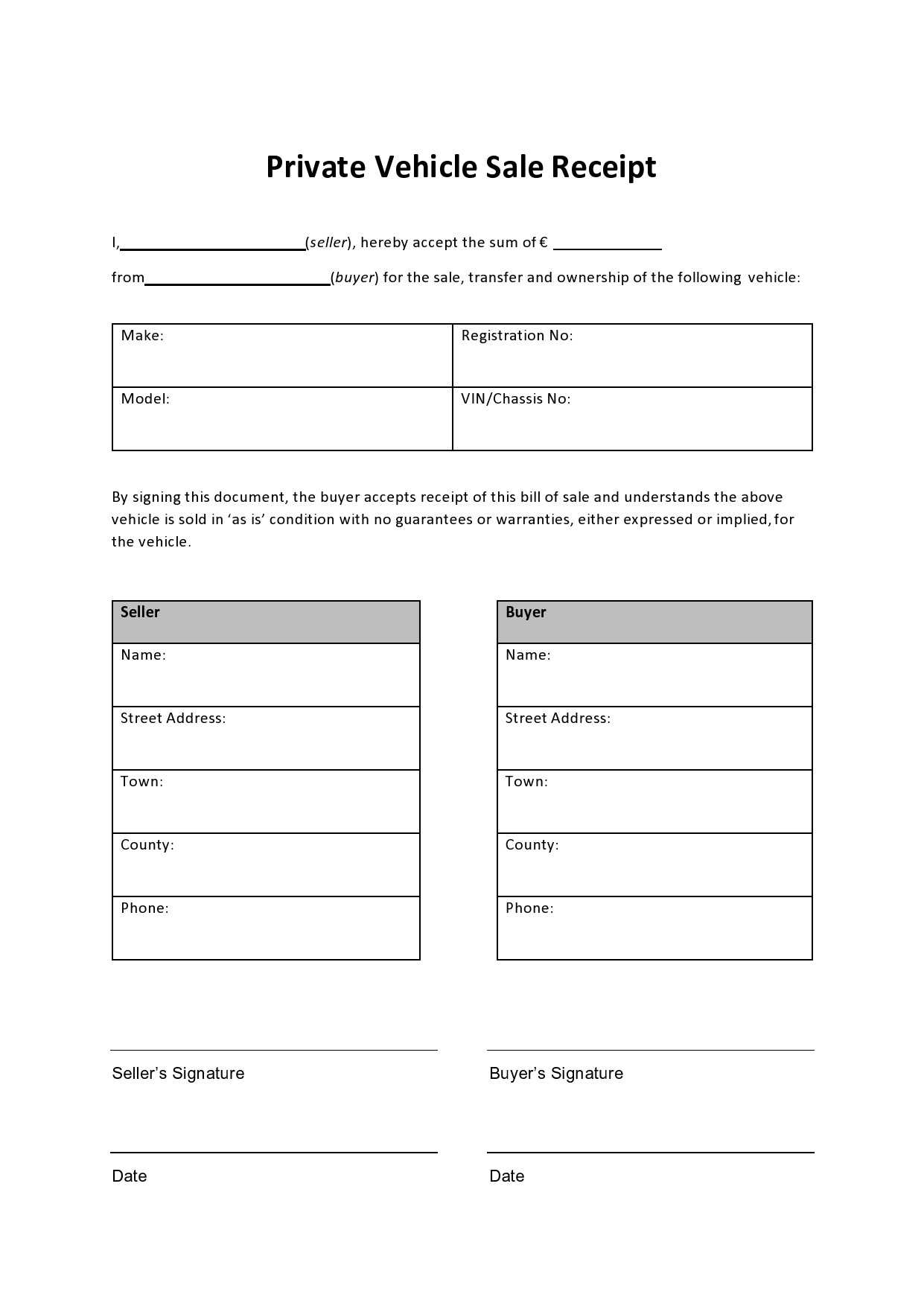
Creating a sold car receipt can prevent future disputes and ensure both parties have a record of the transaction. It’s a straightforward document that confirms the sale of the vehicle and outlines key details, protecting both the seller and buyer. The receipt should include the car’s make, model, year, VIN (Vehicle Identification Number), sale price, date of sale, and buyer and seller information.
Make sure to list any conditions or warranties associated with the car to avoid any misunderstandings. The receipt should also clearly state whether the vehicle is being sold “as-is” or with a warranty. If an agreement on payment terms was made, such as installments or a deposit, include those details for clarity.
Finally, both parties should sign and date the receipt. This makes it a legal document, confirming that both the buyer and the seller acknowledge the transaction and all terms associated with it. Keep a copy for your records and give the other party theirs. This simple document can save you time and trouble if any issues arise after the sale.
Here’s a refined version with minimal repetition:
When creating a receipt for a sold vehicle, clarity and accuracy are key. Begin by including the names and contact information of both the buyer and the seller. Clearly state the vehicle’s make, model, year, VIN, and any other unique identifiers that will confirm its identity.
Details of the Transaction
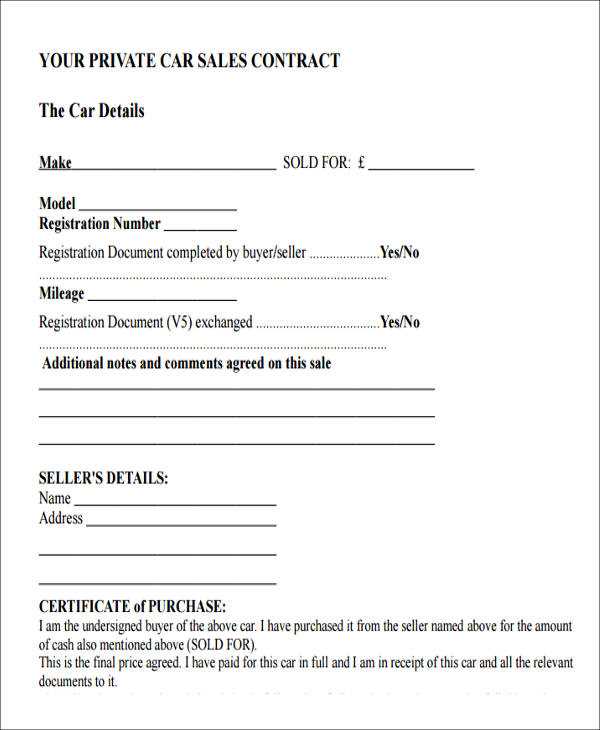
Record the agreed-upon sale price and the date of transfer. This helps to establish the exact terms of the sale. If applicable, note the payment method, whether cash, bank transfer, or check, and include a statement confirming that the seller has received the full amount as agreed.
Signatures and Acknowledgment
Ensure both parties sign the receipt. Include a statement acknowledging that the vehicle is sold “as-is” with no warranties unless otherwise specified. This is crucial for protecting both buyer and seller from future disputes.
Conclude by adding any other relevant conditions that may apply to the sale, ensuring that the document is clear and legally binding for both parties.
What Information Should Be Included in a Car Sale Receipt?
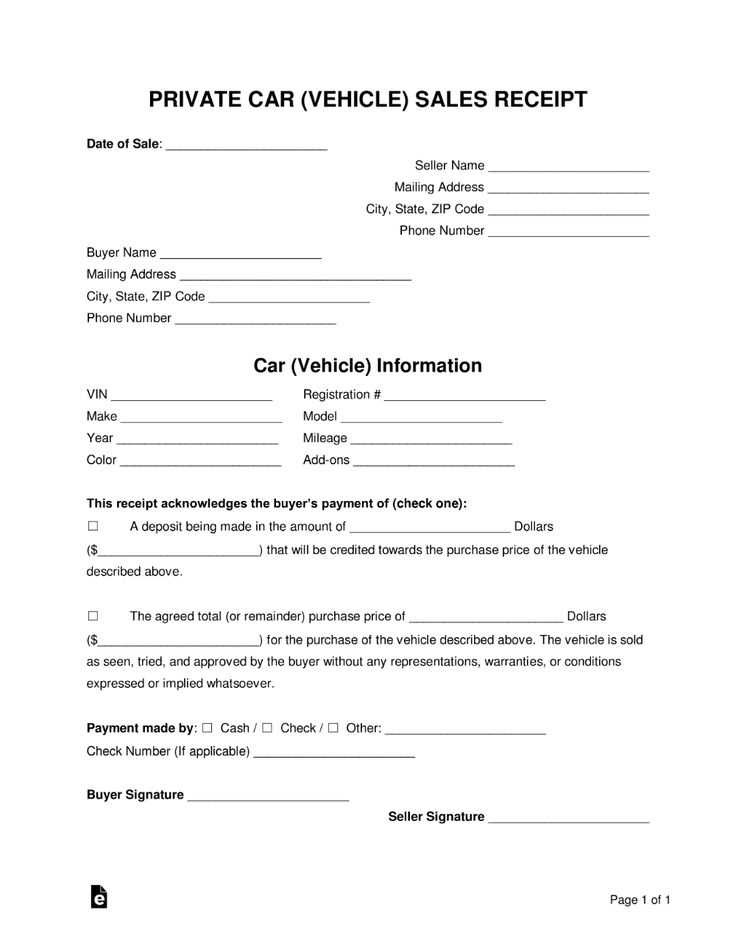
The car sale receipt should include the following details to ensure clarity and legal protection for both parties:
- Buyer and Seller Information: Full names, addresses, and contact information of both parties.
- Vehicle Details: Make, model, year, Vehicle Identification Number (VIN), color, and mileage at the time of sale.
- Sale Price: The agreed upon price for the vehicle, including any taxes or additional fees.
- Date of Transaction: The date the sale took place.
- Payment Method: Specify how the payment was made, whether in cash, check, or other forms of payment.
- Signatures: Both the buyer and seller should sign the receipt to confirm the transaction.
How to Ensure the Legal Validity of a Car Sale Receipt
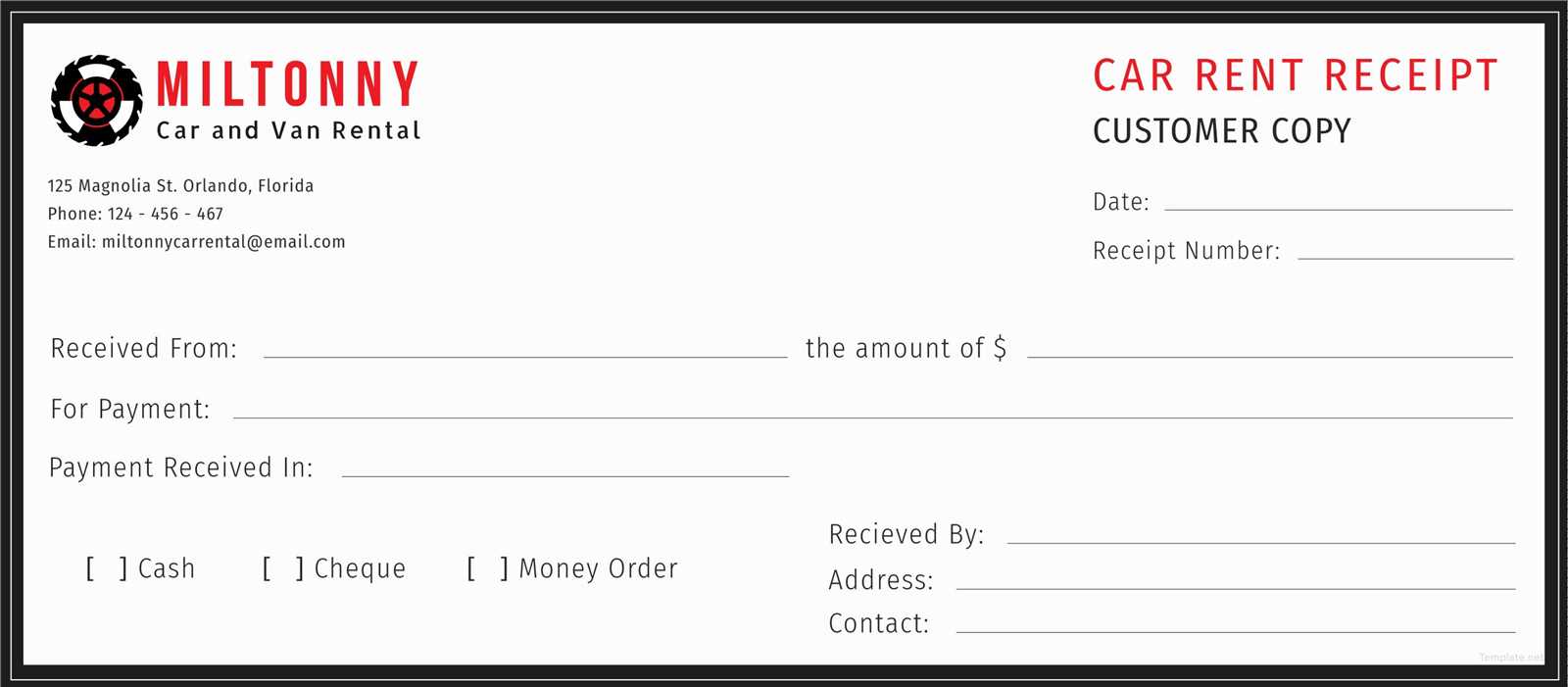
For a car sale receipt to be legally valid, it must be accurate and include all required information. Make sure to retain copies of all documentation, including any additional agreements, warranties, or repairs disclosed during the transaction. In some areas, notarization or a third-party witness may also be recommended to avoid disputes. Double-check that the VIN and other vehicle details match the official documents like the title or registration to prevent future complications.
Common Mistakes to Avoid When Writing a Car Sale Receipt
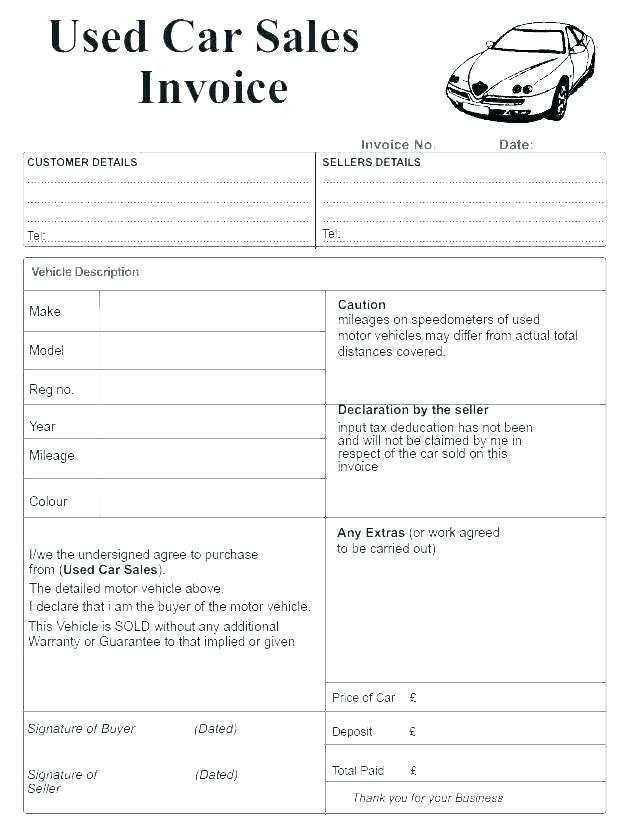
One common mistake is leaving out key details such as the VIN or the full name of the buyer or seller, which can cause confusion in case of a dispute. Avoid vague language in the payment section–be specific about the amount and method of payment. Ensure the receipt reflects the actual transaction and not an estimate or partial payment. Lastly, never forget to include both signatures as they legally confirm the agreement from both sides.


